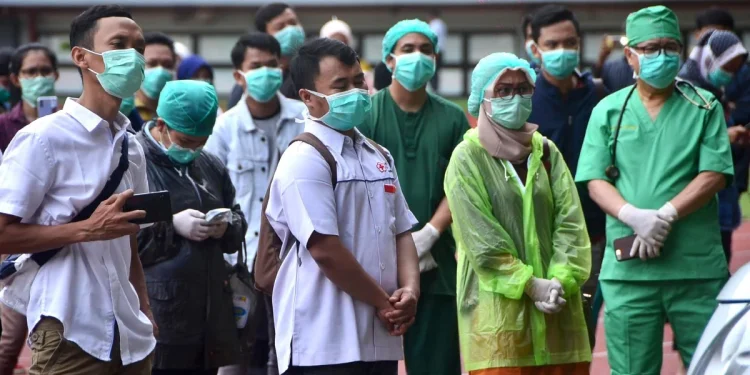
In recent times, a noticeable transformation has taken place in the practices of gratitude and appreciation within the community, particularly in the realm of transportation and delivery. As individuals navigate through unprecedented challenges, the importance of expressing thanks has become increasingly evident. This shift reflects a deeper understanding of the efforts made by those providing essential services under demanding circumstances.
The past few years have prompted a reevaluation of social interactions and the ways in which individuals acknowledge the hard work of service providers. Acts of kindness have emerged as a vital aspect of strengthening community bonds and fostering a spirit of solidarity during trying moments. As society adapts to changing norms, the role of appreciation in everyday transactions has also evolved, showcasing a more heartfelt recognition of support.
Furthermore, this phenomenon points to a broader cultural shift where the act of giving back has grown in significance. As people grapple with the realities of their daily lives, the connection between patrons and those offering their services has deepened, highlighting a collective resilience that thrives even in the face of adversity. The emphasis on showing gratitude has taken on new dimensions, shedding light on the profound impact of kindness amidst life’s uncertainties.
The Rise of Tipping Culture in Indonesia
The landscape of gratitude in financial exchanges has shifted considerably in this archipelago. Societal norms around offering incentives for excellent service are gaining traction, reflecting a growing appreciation for workers who go above and beyond. This evolving practice can be seen as a response to changing consumer behaviors and the acknowledgment of service quality.
Several factors contribute to this transformation:
- Enhanced Service Options: The emergence of various platforms has allowed customers to choose from a wider range of service providers, leading to increased competition.
- Consumer Awareness: A greater understanding of the challenges faced by service personnel has encouraged more individuals to express their thanks financially.
- Cultural Shifts: The blending of traditional hospitality with modern expectations fosters an environment where kindness and gratitude are valued more openly.
This change is not merely a trend but a significant shift in societal attitudes toward recognition and appreciation within economic interactions. As more people adopt this practice, it becomes an integral part of daily life and a reflection of mutual respect between clients and service providers.
When observing this phenomenon, one can identify emerging practices:
- Consumers often leave additional amounts beyond the base fare or price of a service.
- Rewards are sometimes shared during communal experiences, enhancing the sense of community.
- It encourages providers to maintain high standards, knowing that quality will be rewarded.
In conclusion, this adaptation not only enriches the experience of service but also strengthens the bond between community members. As the appreciation for excellent service grows, so does the cultural practice of rewarding those who deliver it with exceptional care.
Factors Influencing Generosity in Tips
The act of providing additional monetary appreciation can be influenced by various elements that shape an individual’s behavior and decisions. Understanding these factors is essential for comprehending how and why people enhance their payments for services received. A combination of personal values, social norms, and situational context all play crucial roles in determining the extent to which extra funds are given.
Personal and Cultural Influences
Individual values and cultural background significantly influence the decision to provide additional compensation. People raised in environments that emphasize community support and mutual aid are more likely to show appreciation through monetary gestures. Additionally, cultural expectations around service-oriented roles can affect how much individuals feel compelled to express gratitude.
Service Quality and Customer Experience
The overall experience and quality of service received can greatly impact the likelihood of providing a bonus. Factors such as attentiveness, efficiency, and friendliness are pivotal in shaping perceptions and can lead to more substantial rewards for service providers. A positive interaction can create a sense of goodwill that encourages higher monetary expressions of gratitude.
|
Influencing Factor |
Description |
|---|---|
|
Personal Values |
Individual beliefs and ethics guiding the inclination to offer extra compensation. |
|
Cultural Norms |
Social standards and traditions that dictate appropriate behaviors around gratitude. |
|
Service Quality |
The effectiveness and approach of the service provider impacting customer satisfaction. |
|
Situational Context |
The environment and context in which the service is rendered affecting emotional responses. |
Impact of the Pandemic on Delivery Services
The global health crisis has significantly transformed various sectors, leading to a noticeable change in consumer behavior and market dynamics. One area that has experienced a remarkable shift is the realm of delivery, where demand surged as individuals sought convenient and safe ways to obtain goods. This evolution has reshaped the operational landscape, prompting both businesses and consumers to adapt to new norms.
Shift in Consumer Preferences
As traditional shopping became less feasible, many turned to online platforms for their purchasing needs. This trend resulted in a dramatic rise in the popularity of delivery systems, which catered to the growing demand for convenience. Companies in this sector elevated their operational strategies, implementing safety protocols and enhancing user experiences to maintain customer satisfaction amidst restrictions.
Economic Effects on the Delivery Sector
The surge in demand has encouraged many entrepreneurs to enter the market, further stimulating economic activity. Increased engagement in these platforms not only benefited existing operations but also created various job opportunities in an otherwise challenging economic environment. However, this growth came with challenges, as firms had to manage supply chains effectively while ensuring the safety of their workforce.
In conclusion, the recent health crisis has driven substantial changes in the delivery domain, influencing consumer habits and encouraging the evolution of business practices. The long-term effects of these transformations will likely leave a lasting mark on how goods are transported and received in the future.
User Experiences with Grab Services
This section delves into the diverse experiences of individuals utilizing ride-hailing platforms. It highlights the interactions, satisfaction levels, and overall feedback from users who rely on these transportation options in their daily lives. Personal stories and reflections reveal how these platforms adapt and cater to the needs of their clientele.
Positive Interactions and Convenience
Many individuals have reported a seamless and efficient process when booking rides. The user-friendly application allows for quick access, ensuring that customers can easily request transportation on the go. Feedback often emphasizes the timely arrival of drivers, creating a sense of reliability. Passengers frequently appreciate the communication provided throughout the journey, which enhances their sense of safety.
Challenges Faced by Riders
Despite the overall favorable experiences, some users express concerns regarding certain aspects of the experience. Issues such as inconsistent fares and occasional delays in service are highlighted. Customers suggest that improved management of the driver network could enhance reliability further, while also addressing any discrepancies in pricing. Nonetheless, the majority of feedback remains positive, indicating a strong commitment to improving experiences in the transport landscape.
Comparative Analysis of Tipping Trends
This section delves into the evolution of gratuity practices in different contexts, highlighting various aspects that determine the frequency and amount of additional compensation given to service providers. By examining both historical and contemporary behaviors, we can identify patterns and shifts influenced by external factors, such as socioeconomic changes and public health crises.
Historical Context
Gratuity practices have been shaped by cultural norms and economic conditions over the years. Key influences have included:
- The rise of consumer-oriented services.
- Changes in disposable income levels.
- Social movements advocating for fair wages.
Understanding these elements helps clarify how past behaviors influence current trends in additional compensation.
Contemporary Shifts
Recent developments have led to noticeable transformations in the methods and frequency of showing appreciation. Factors impacting these changes include:
- Technological advancements facilitating cashless transactions.
- Heightened awareness of service worker conditions.
- The influence of social media and peer pressure.
This analysis of modern practices provides insight into the evolving nature of gratuity in today’s economy, revealing a trend toward heightened willingness to provide additional support amidst challenging circumstances.
Future of Tipping Post-Pandemic
The evolving landscape of gratuity practices reflects significant shifts in societal attitudes and economic behaviors influenced by recent events. As communities begin to recover from the global health crisis, a reevaluation of appreciation gestures is taking place, highlighting changing perspectives on rewarding service providers. The future may usher in new norms and expectations within this space, affecting both consumers and those in the service industry.
Changing Attitudes Towards Appreciation
With many individuals experiencing heightened awareness of the efforts made by frontline workers, future gestures of gratitude may become more thoughtful and intentional. Rather than being viewed solely as an obligation, appreciation could evolve into a more personalized expression, tailored to the quality of service and overall experience. This shift could encourage service providers to deliver exceptional experiences in anticipation of enhanced recognition.
The Role of Technology
Advancements in technology will likely play a pivotal role in shaping future practices. Digital platforms that facilitate transactions may incorporate features designed to streamline and elevate these expressions of thanks. As innovations continue to emerge, the methods through which individuals choose to acknowledge service may diversify, further influencing the overall etiquette in the hospitality sector.
Q&A: Indonesians tip more generously during pandemic grab
What factors contributed to the increase in tipping among Indonesians during the pandemic for Grab services?
The increase in tipping among Indonesians during the pandemic can be attributed to several factors. Firstly, the pandemic exposed the challenges faced by delivery drivers and food service workers, prompting many customers to express their gratitude through tips. Secondly, the economic situation led to a greater sense of community support; people recognized the importance of helping local workers who were struggling financially. Lastly, social media campaigns and awareness initiatives may have encouraged a culture of generosity, highlighting the importance of tipping as a way to support essential workers during these tough times.
How has the pandemic changed the way Indonesians perceive tipping practices?
The pandemic has significantly shifted the perception of tipping practices among Indonesians. Traditionally, tipping was not as common or expected in Indonesian culture. However, the pandemic has instilled a sense of solidarity and responsibility towards service workers, leading to a more positive attitude towards tipping. Many consumers now view tipping as a crucial means of contributing to the livelihood of drivers and delivery personnel who have risked their health during the pandemic. Consequently, what was once seen as a rare gesture has evolved into a more regular practice, reflecting a growing respect for service providers and their contributions.
Are there any statistics or studies that back up the claims of increased tipping during the pandemic in Indonesia?
Yes, several surveys and studies conducted during and after the pandemic have indicated a substantial increase in tipping practices among Indonesians using Grab services. For instance, a study by a local university found that 60% of respondents reported tipping more frequently than before, with the average tip amount also seeing a noticeable increase. Additionally, Grab’s internal data suggested that the overall tips given through its platform rose by approximately 25% during the pandemic, highlighting the trend of increased generosity among users.
What impact has the increased tipping had on the lives of Grab drivers in Indonesia?
The increased tipping during the pandemic has had a positive impact on the lives of Grab drivers in Indonesia. Many drivers reported that tips have helped them cope with financial challenges brought on by the pandemic, supplementing their income during periods of reduced demand. Tipping has also fostered a sense of appreciation among drivers, motivating them to provide better service and maintain a positive attitude despite difficult working conditions. This cultural shift towards tipping has not only enhanced their earnings but also reassured them that their efforts are recognized and valued by customers.
What can other countries learn from Indonesia’s experience with tipping during the pandemic?
Other countries can learn valuable lessons from Indonesia’s experience regarding the importance of supporting frontline workers during crises. When faced with a similar situation, fostering a culture of generosity and support, such as through tipping, can be crucial in helping struggling service workers. Countries could implement awareness campaigns to highlight the challenges faced by these workers, encouraging customers to tip as a way to express gratitude and solidarity. Additionally, promoting community engagement and establishing partnerships between platforms and local businesses can enhance the overall support system for workers during difficult times, ensuring their livelihoods are sustained.
What factors contributed to the increased generosity in tipping among Indonesians during the pandemic, particularly for Grab services?
The increase in generosity among Indonesians when it comes to tipping Grab service providers during the pandemic can be attributed to several key factors. Firstly, the pandemic created significant financial hardships for many drivers and delivery personnel, prompting a sense of empathy among customers. As people became more aware of the struggles faced by these workers, many felt motivated to provide additional financial support through tipping. Secondly, the heightened reliance on delivery services during lockdowns and social distancing measures made these workers essential to everyday life, fostering a sense of community support. Additionally, the use of digital payment platforms has made it easier for customers to tip, encouraging more frequent acts of generosity. Lastly, cultural nuances also play a role, as many Indonesians view tipping as a way to express gratitude and acknowledge the hard work of service providers, further bolstered by the collective experience of the pandemic.
How has the lockdown affected the economic activities in Jakarta compared to the period before the COVID-19 pandemic?
The lockdown in Jakarta has led to a significant impact on economic activities. Data from March 2020 indicates a marked decline in various sectors, including a 42 percent decrease in transactions compared to the previous month. In contrast, data from October 2019 showed more stable economic conditions. The pandemic has also brought about a shift in consumer behavior, with an increase in online services such as meal delivery, which showed a 4 percent increase in the number of transactions.
What measures has the Indonesian government implemented to curb the spread of COVID-19 in residential areas?
To curb the coronavirus in residential areas, the Indonesian government has implemented large-scale social restrictions (PSBB) and checkpoints. These measures aim to control the movement of people and reduce the spread of COVID-19. The enforcement of face masks and sanitation protocols in places of residence has been crucial. Additionally, data from the Indonesia Economic Forum highlights that these restrictions have been effective in controlling the spread compared to the previous months.
How does the rate of COVID-19 infection in Bangkok compare to other Southeast Asian cities?
The rate of COVID-19 infection in Bangkok, Thailand, has been relatively lower compared to other cities in Southeast Asia. Xinhua News Agency reports that Bangkok’s infection rates are among the lowest in the region, largely due to effective lockdown measures and public health initiatives. For instance, data from March 2020 showed Bangkok’s infection rate was significantly lower compared to cities like Jakarta and Manila.
What has been the impact of the COVID-19 pandemic on the usage of public transportation in Singapore?
The COVID-19 pandemic has drastically affected public transportation usage in Singapore. The introduction of large-scale social restrictions and a mandatory stay-at-home policy led to a significant decrease in pedestrian traffic. Compared to the previous month, March 2020 saw a noticeable drop in the number of travelers using public transport. The increase in safety measures, such as sanitation and social distancing on public transport, has also impacted the frequency and nature of travel.
How did the introduction of face masks and health measures affect shopping behaviors in malls during the pandemic?
The introduction of face masks and health measures in malls significantly altered shopping behaviors. During the pandemic, shoppers were required to adhere to safety protocols, including wearing face masks and practicing social distancing. This led to a decline in mall foot traffic but a 18 percent increase in online shopping transactions. Data from GrabFood showed a 4 percent increase in food delivery services, highlighting a shift in consumer preferences towards safer, contactless shopping options.





